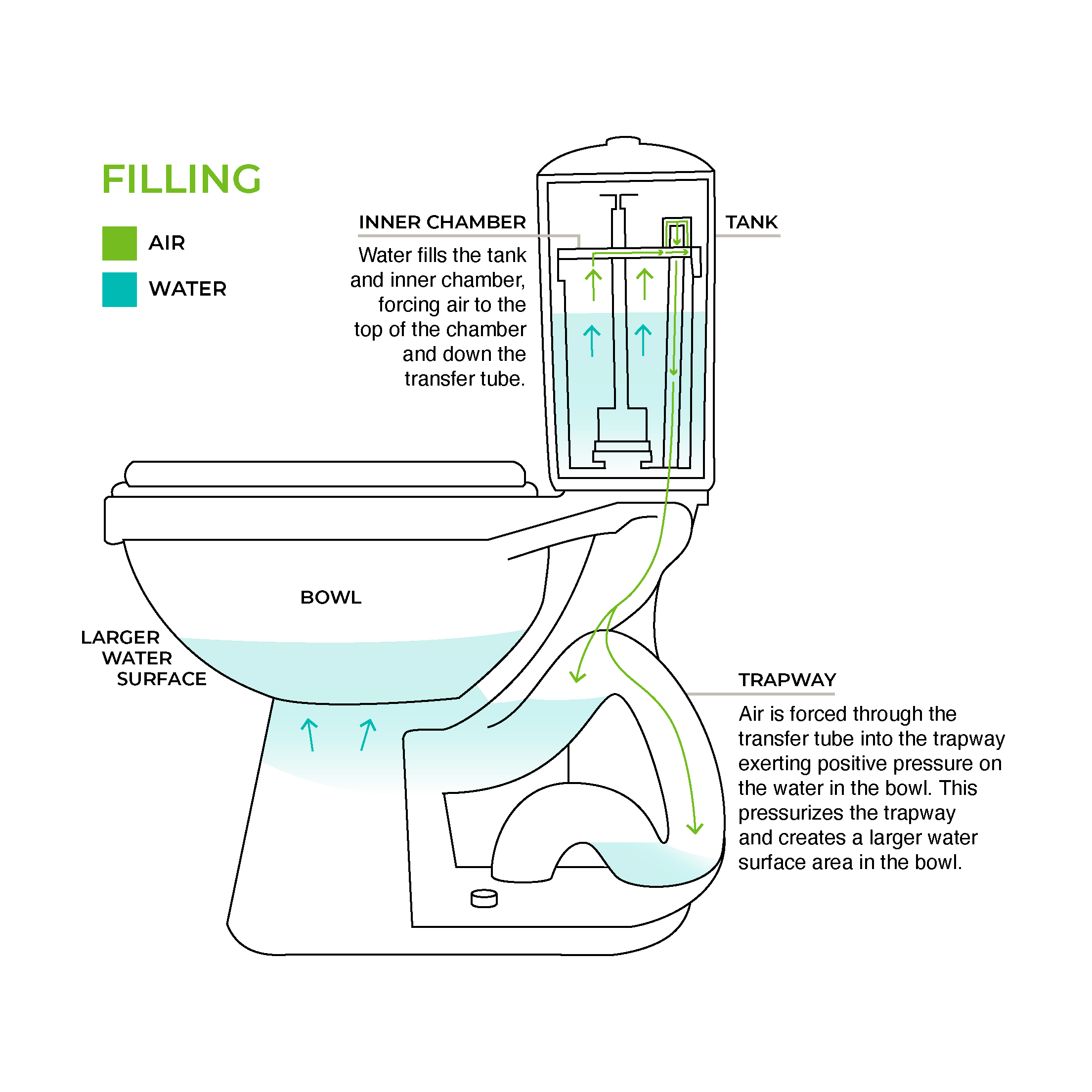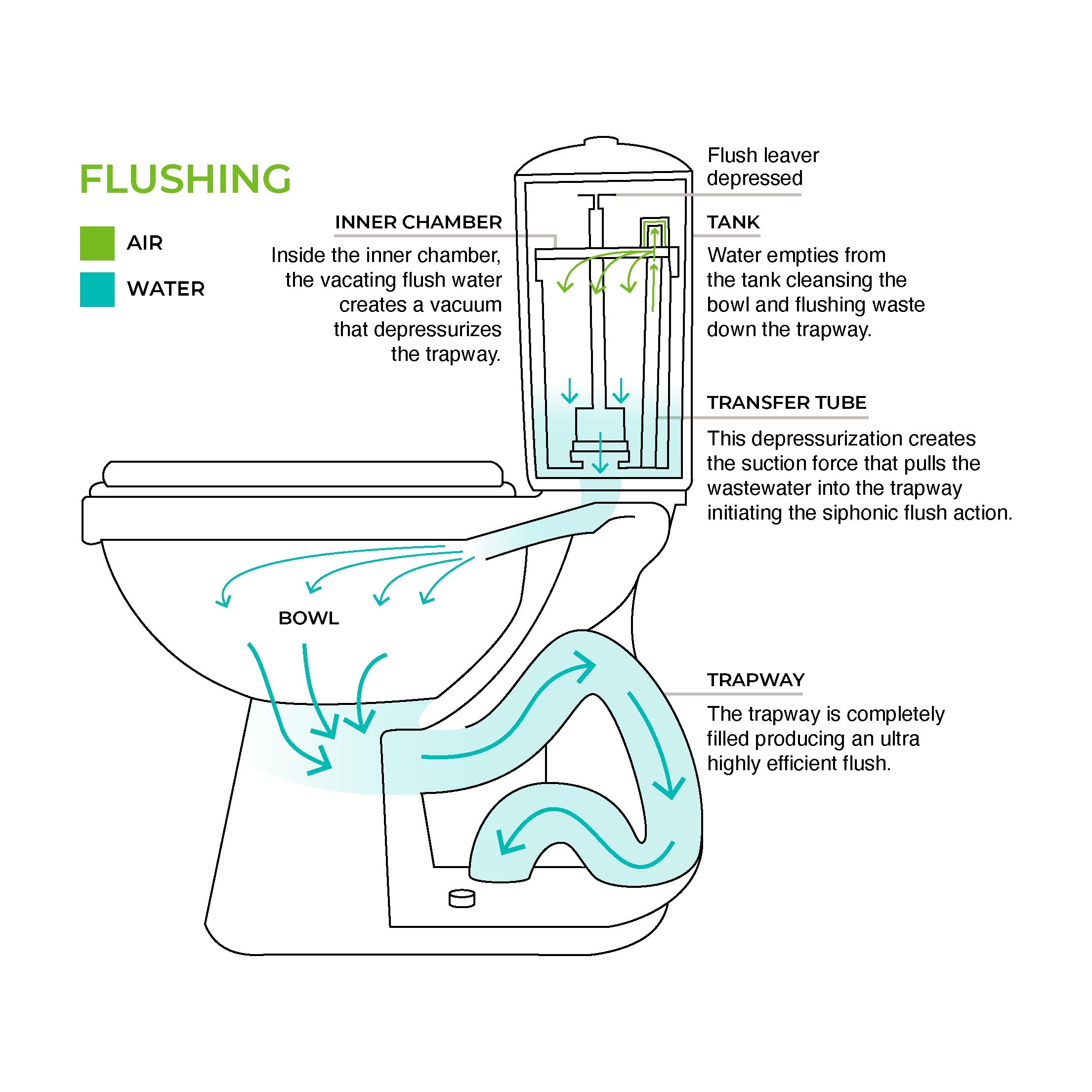Things you need to know about the most popular seat in the house
In 2014, Otogawa-Anschel, a design firm located in Minnesota, released an article titled “Everything You Ever Wanted to Know About Toilets but Were Afraid to Ask.” Within the article, the company found that on average, people spent up to 30 minutes a day on the toilet.1 Those small trips throughout the day certainly can add up! It is no wonder that there have been many advances when it comes to design and the efficiencies since toilets were invented in 1596.
Have a heating, cooling, or plumbing problem, but no time to wait for a repairman? Need a second opinion on an existing quote?
We’ll give you free advice about your question or problem. In many cases, you’ll get an estimate or the help you need during the video call.
First, a quick toilet lesson
No, this is not referring to potty training! Before you consider the type of toilet that could work best for you, it is helpful to know the parts, whether it is a commercial toilet or traditional one. You are probably most familiar with the parts you can physically see every day, which include the rim, tank, handle, and bowl. If you have ever lifted the lid to inspect a running toilet as most of us have, you have probably tinkered with the filler valve and filler float, overflow tube, and the flush valve. Arguably the most important part of a toilet – the part that is responsible for transferring waste from the home to the sewer pipes – is the siphon. Thankfully, we don’t usually see that. If you’re a visual person, check out this diagram.
Types of toilets
You might not realize how many types of toilets exist. The traditional form is the two-piece model that consists of a tank and bowl that are sealed together. The benefit of this is that they are easy to assemble and install, so many people can opt to do it themselves. A potential inconvenience is that tanks can be large and cumbersome.
The one-piece model comes with the tank and bowl as one unit. This type looks more modern, sleek, and does not trap dirt in the seams. In most cases, it will be more expensive than the traditional model.
While the one and two-piece toilets are the most popular, certain toilet types have emerged that fit small spaces and are more energy-efficient, such as the wall-mount and tankless toilets.
Save more with the right flush
Traditional toilets waste between 6-8 gallons of water with the average family of four flushing roughly 120 gallons of water a day! 2 In response to this waste of resources and increase in water bills, the low-flow toilet was created. The low-flow functions like the traditional toilet, but it only uses 1.6 gallons of water with each flush. This means the family of four that used the 120 gallons of water with a traditional toilet instead use about 32 gallons per day.
Dual-flush toilets are gaining in popularity, as well. Through the use of a lever installed on the toilet a person can push one button and use .8 of a gallon for liquid waste, or another button that uses 1.6 gallons for solid waste.
Remember: you are not a plumbing expert
Of course, all of this knowledge about toilets is pretty meaningless if you do not clean and maintain your toilet regularly, no matter what type of toilet you own and how you flush it. But if you need help with maintenance of your toilet, your toilet is experiencing problems, or you are in the market for a new toilet, please do not hesitate to contact Commercial Service.
To learn more about how a toilet works or to get yours assessed and repaired, schedule an appointment with our easy Online Scheduling or by calling 812-339‑9114.
http://otogawa-anschel.com/blog/everything-you-ever-wanted-to-know-about-toilets-but-were-afraid-to-ask/
https://modernize.com/home-ideas/34482/what-you-need-to-know-about-eco-friendly-toilets
http://www.hgtv.com/remodel/bathroom-remodel/tips-for-buying-a-toilet
http://engineeringstudymaterial.net/buzz/parts-of-a-toilet-system/





